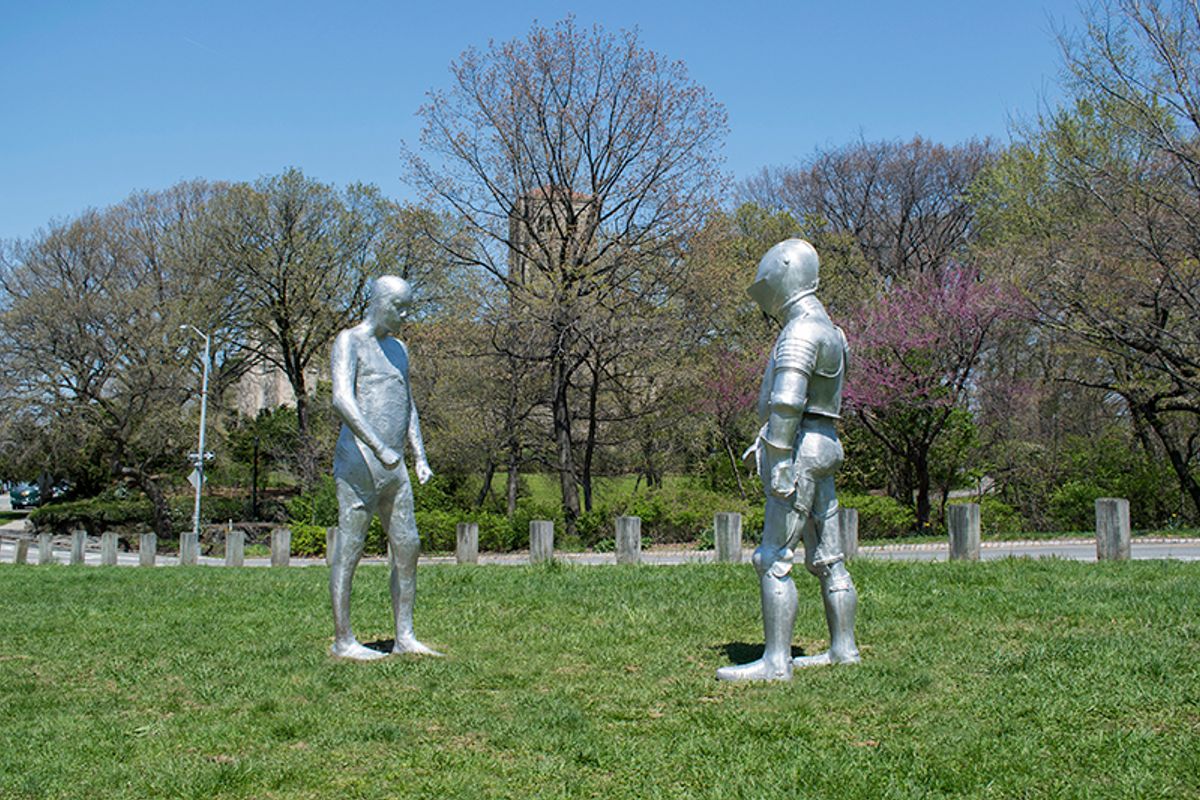While the exhibition Heavenly Bodies takes up space inside the Metropolitan Museum of Art’s Upper Manhattan outpost for medieval art, a group of earthly bodies has landed at the Cloisters Lawn in Fort Tryon Park, in the Icelandic artist Steinunn Thorarinsdottir’s public work, ARMORS (until 12 September). Organised by the New York City Public Parks, the project places Thorarinsdottir’s typical nude, androgynous life-sized figures, based off the body of her son, face-to-face with replicas of 16th-century European suits of armour selected from the Met’s collection. They have been 3D scanned by the museum’s imaging department and cast in the same aluminium as the human figures. Unlike in a museum setting behind glass, where the armour’s original purpose is somewhat lost, the artist says, “The ARMORS armours are actual firm cast sculptures that people can approach, touch and feel the tension between the armour and the naked vulnerable human being opposite.”
Those who think of Ellsworth Kelly’s work as brightly coloured can discover other sides of his practice in the Flag Art Foundation show Ellsworth Kelly: Black & White Works (until 19 May). Organised by the late artist’s longtime partner Jack Shear, the President of the Ellsworth Kelly Foundation, the exhibition of all black-and-white works has quintessential compositions like defined-edge abstract paintings. But it also shows radically different works, like late linear sketches of a rock formation at Belle-Île in France, which Kelly chose since it was captured by Claude Monet. Other works include rarely-seen photographs that the artist took in Meschers, France in 1950, with subjects ranging from pine branches to a shelled bunker. A concurrent group exhibition at Flag, Painting/Object: Sarah Crowner, N. Dash, Sam Moyer, Julia Rommel, Erin Shirreff, shows new and recent works by these five young female artists, all inspired by Kelly’s practice.
Before the Fall: German and Austrian Art of the 1930s (until 28 May) at the Neue Galerie, an informative look at the development of artists in this decade, is as heavy and foreboding as its title suggests. It has around 150 paintings and works on paper by artists and photographers including boldfaced names like Otto Dix and August Sander—whose portraits include National Socialists and men and women given the general title “victim of persecution”—as well as artists who are not as well known in the US. These include Friedl Dicker-Brandeis, who taught art while in the Theresienstadt concentration camp and was killed in Auschwitz-Birkenau in 1944. Her paintings and intense, screaming photocollages, which look at issues like consumerism and working-class poverty, are shown. Another artist to discover is Josef Scharl, who often made works depicting the military, but is also represented in the show by a peacefully snoozing chubby-cheeked baby.


